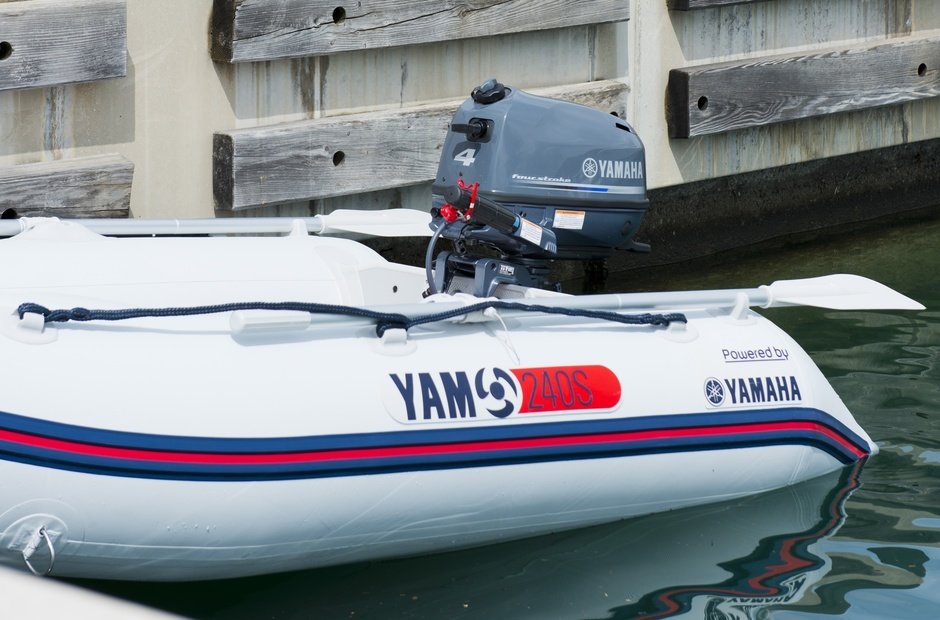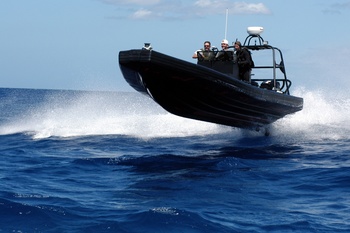The four-stroke 5 hp engine is the optimal choice for almost all small boats. It is light enough - yet powerful enough to withstand the excitement and the current. It is a workhorse for a small fleet. Motor Boat & Yachting magazine has conducted a comparative test of six popular outboard engine models up to 5 hp to find out which one is the best.
The tests were as close to real conditions as possible. The tests were conducted on a 2.9 meter inflatable boat. The evaluation was given on five criteria within a scale of 1 to 5.
Comparison criteria
Assembling quality
Here the quality and monolithic components were assessed, as well as the brand reputation and the availability of warranty. Important: To ensure that the warranty is maintained until the end of the period, the engine owner needs to confirm that the engine has been serviced only by manufacturer-certified service centers.
Productivity
Maximum speed and acceleration may not come first for owners of 5-hp engines, but it is certainly the most important performance indicators of the engine. You will feel the lack of these indicators when you have to go on a boat loaded with people and things against the current and the wave.
Comfort
The noise generated by each engine at three knots and at full speed was measured, and the smoothness of their operation and feeling was subjectively assessed, especially during acceleration.
Easy to use
Engine weight can be a decisive factor for some. The difference between the lightest and heaviest engine on the list is 5 kg; agree that this is quite significant when you have to carry it to the boat and install it on the transom alone.
After installation, attention shifts to the design and ergonomics of the control panel with a gear lever, gas knob, tilt regulator and starter cord.
Another important feature of four-stroke engines is that they need to be placed on their side to prevent oil from pouring into the combustion chamber. There should be special stops and handles on the housing to make it convenient to turn it over, and informative drawings.
Tank size
Not all engines have a built-in tank, and if they do, the difference in size between the different models can be up to 40%. Since the approximate fuel consumption is 0.7 l/h at full speed, there is no extra volume.
And now let's move on to our contestants.
Honda BF5
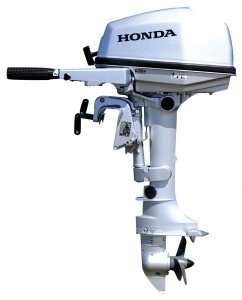
Price: 115 000 r.
Maximum speed: 4.9 knots
acceleration from 0 to the maximum speed: 5.3 s
Noise (idle / medium / full stroke): 69/82/87 dB(A)
Weight
:
27 kg
Warranty
:
6 years
Manufacturer's website: honda.co.ru/marine
This particular model is likely to be discontinued and replaced by a new modification. At the price of 115 thousand this is the most expensive 5 hp engine from our list, and it will have to somehow justify its cost.
Assembly quality: 5/5
Honda has long established itself as a manufacturer of quality goods. The engine is assembled from reliable materials. This is confirmed by a six-year warranty on it, which became the basis for such a high assessment. As an addition it is possible to install the generator on 3A, though it has the smallest power of all tested.
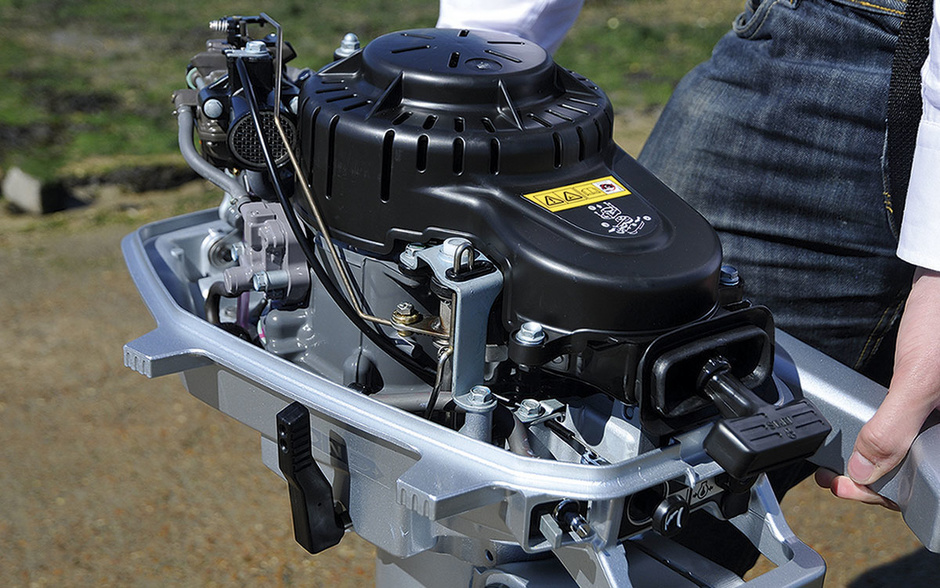
Productivity: 4/5
If the conditions were better, Honda might have reached a speed of five knots, but all we could squeeze out of it was 4.9 knots.
In acceleration, the engine takes second place (following Yamaha), reaching a maximum in 5.29 seconds.
Comfort: 3/5
Usually Honda engines are soft on the move, but the BF 5 works as if with a break. The noise level is also high, and overall the engine runs louder than expected, both at idling speed and in the middle. However, when the engine is running almost at full throttle, the situation has changed and the BF 5 is the second quietest engine in this mode (after Yamaha F5).
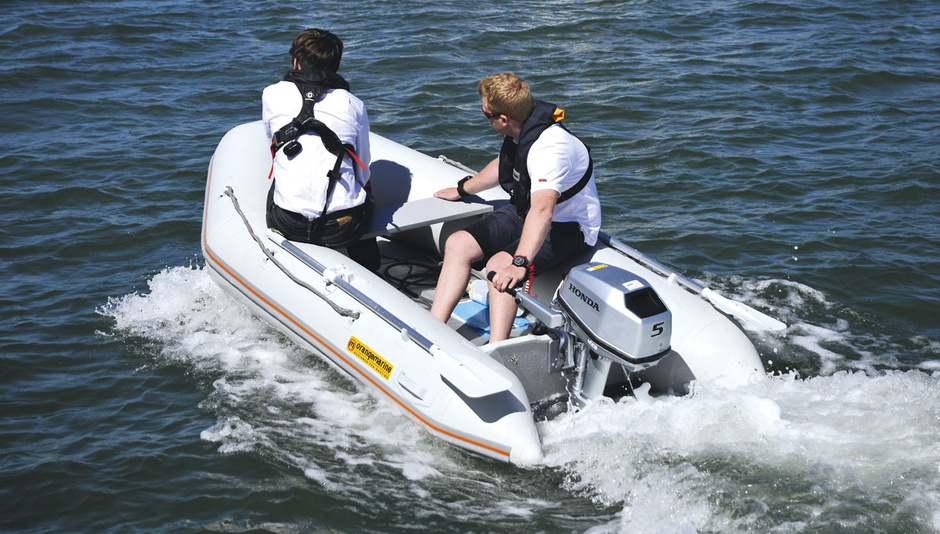
Easy to use: 2/5
Together with Yamaha, Honda is the heaviest 5 hp engine at 27 kg. To carry the engine by the handle is a pain. When you grab it, you realize that the handles and switches on the control panel rest on your fingers. Though there is a convenient enough place on a hood to grasp the motor, you cannot carry the motor for it.
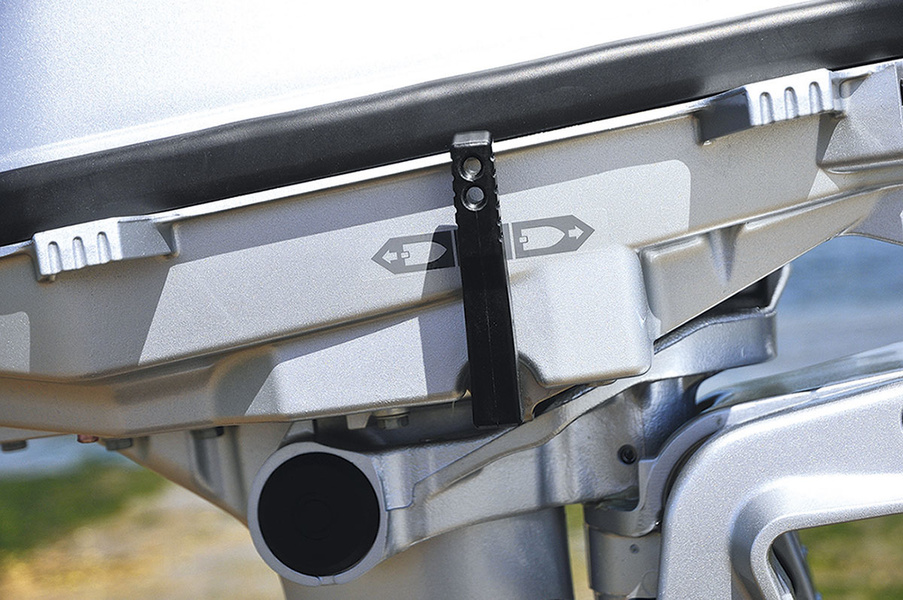
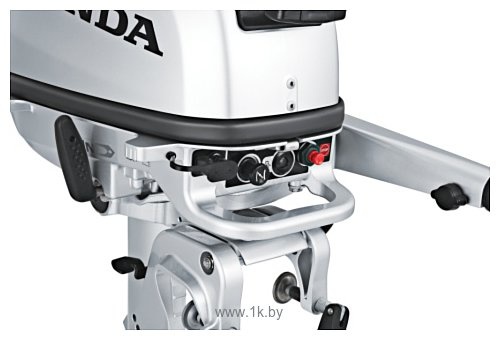
Tank volume: 2/5
It's the only 5-horsepower engine that doesn't have a built-in fuel tank. The need for it is more of a personal choice, but for many customers the lack of a tank will be a disadvantage of this model. The engine is available with an external 12-liter or larger 25-liter tank.
Conclusion: 3/5
By asking for such a high price, Honda wins only during the warranty period. This cannot fully justify the money invested. Of course, the engine may be ultra-reliable, but judging by the fact that Honda produces one generation after the other, it is still being reworked.
Lehr 5hp Propane
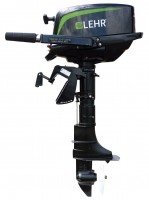
Price: 102 000 r.
Maximum speed: 4.5 knots
acceleration from 0 to the maximum speed: 6.3 s
Noise (idle / medium / full speed): 74/85/89 dB(A)
Weight
:
22 kg
Warranty
:
3 years
manufacturer's website: golehr.com
Working on propane, Lehr stands out from the whole group. Liquefied gas has gained popularity as a fuel for motor vehicles because of its lower price, and now it has reached the outboard motors. The features of this engine are the ease of storing fuel in conventional propane tanks and its environmental friendliness. It is also worth noting that the exhaust is almost odorless and contains less harmful emissions.
Assembly quality: 3/5
Due to the fact that Lehr is a young brand, we can not be sure of its reliability, but the motor manufacturer gives 3 years warranty. Most of the details give the impression of reliability, but the hood fasteners are as thin as paper.
In general, the engine looks like Yamaha from our review, but unlike the last one, here we can't tell you how long the engine will work and how the warranty service is. It's also not possible to install a generator, so the estimate is 3 out of 5.
Productivity: 2/5
Lehr was the slowest engine we tested. We went out on it twice, but it never got over 4.5 knots with the 5 knots declared. The acceleration was not smooth either - it reached its top speed in 6.3 seconds.
The Lehr was also the loudest engine. At full speed on noise level it is the same as Tohatsu and Mercury/Mariner (89dB(A)), but the sound is more rigid.
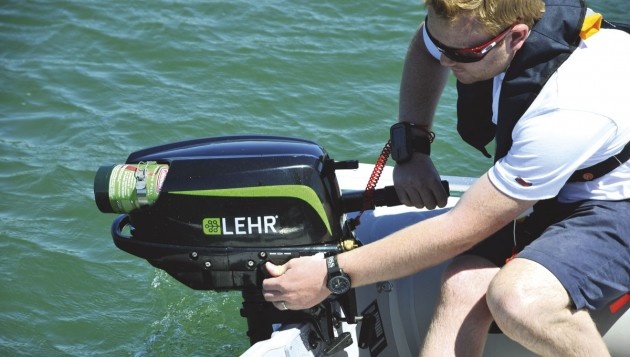
Easy to use: 4/5
It is easy to carry the engine thanks to the huge handle. The side mounted shift lever is smaller than usual, making it difficult to change gears quickly. You will also need to apply force when starting the engine. However, with its 22 kg, this engine is the lightest of the test subjects.

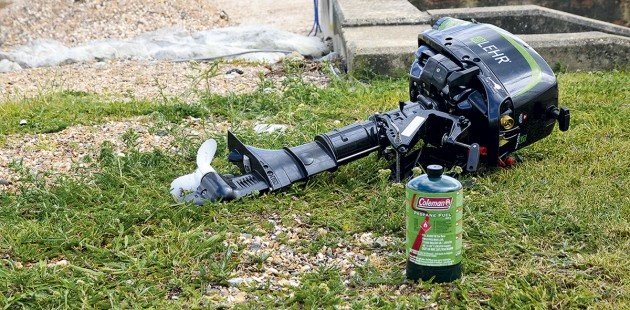
Tank size: 4/5
The absence of gasoline, which can spill and therefore odor, clearly indicates the advantages of hermetic propane tanks. The engine can be powered by a conventional propane burner tank, which stands on most galleys on yachts and can be used throughout the season, or a propane burner tank can be connected, which tourists use as a mobile solution. However, they are not cheap and will run from 40 minutes to 2 hours depending on how you load the engine.
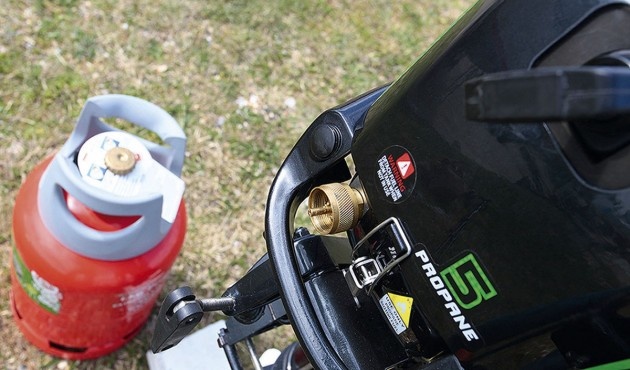
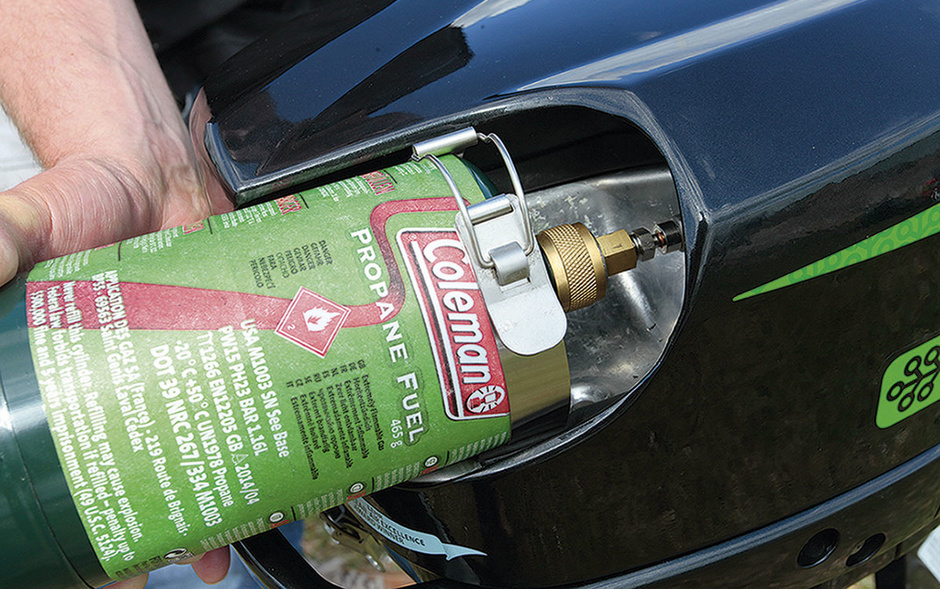
Conclusion: 3/5
It is certainly not the best engine in our review, but it is a great alternative to gasoline engines. Until recently, the dealer network worked only in the UK, but now there are offices in the EU, and the geography continues to expand.
Mariner/Mercury F5
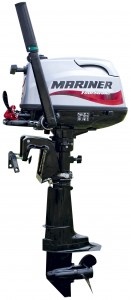
Price: 82 000 r
Maximum speed: 5.5 knots
Acceleration from 0 to maximum speed: 6.9 s
Noise (idle / medium / full speed): 68/79/89 dB(A)
Weight
:
26 kg
Warranty
:
5 years
manufacturer's website: mariner-outboard.com
The Mariner/Mercury duo uses a cylinder block from Tohatsu. The differences, however, are not only in appearance. Mariner/Mercury uses a different gearbox, so the characteristics of this motor are not similar to Tohatsu, although the difference is small.
Assembly quality: 4/5
So, under the hood of the Mariner/Mercury engine from Tohatsu, and the changes concern the installation of its own gearbox. Installing its own gearbox allowed reducing the weight of the motor, which is 26 kg. It is also possible to install a 6-amp generator on Mariner, which is more than that of Tohatsu.
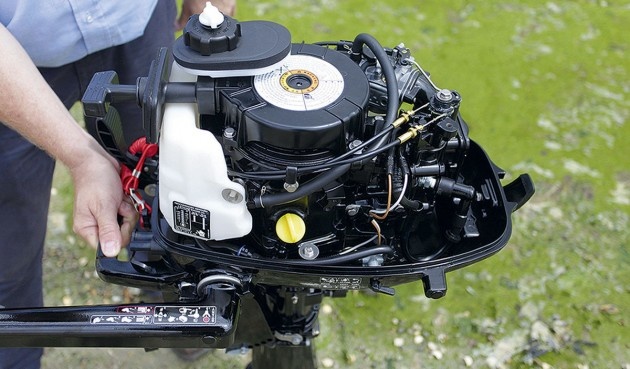
Productivity: 3/5
Mariner doesn't even stand close to overclocking Tohatsu: he needs 6.9 seconds to get the top speed (vs. 6.5 Tohatsu).
It gives out the declared speed of 5.5 knots, but it can be slightly reduced by 0.1 knots with deteriorating weather conditions.
Comfort: 3/5
The noise level is the same as expected of Tohatsu. At neutral speed the measurements were 68dB(A), at average - according to the manufacturer (79 dB(A)), and at full speed it was one of the loudest (89 dB(A)) and hardest in sound.

Easy to use: 4/5
As with Tohatsu, the speed switch is on the bow of the motor. When manoeuvring in the marina, the convenience of this layout is immediately felt. And Mariner also has the same system of fastening and fixing on a transom.
Tank size: 3/5
Again, as with Tohatsu, the built-in tank has a capacity of 1.15 litres, so owners will have to take care of an external tank for long journeys. In addition, this model is available with an elongated stern in the Sail-Mate version, and it is possible to replace the built-in tank with a remote one at no extra cost.
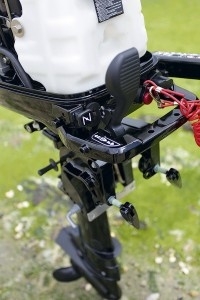
This is a well thought-out and worthy engine, and its price tag can't help but gladden, even considering that its performance and comfort from its use is not ideal. The difference between Tohatsu and Mariner is small, so the choice between them will rather depend on your attitude towards the brand and their price tags.
Suzuki DF5
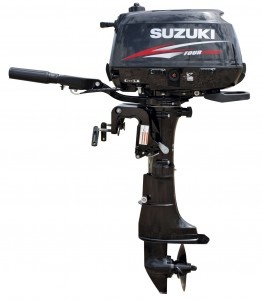
The five-horsepower Suzuki is the lightest of the presented gasoline engines. With a weight of 25 kg, you can immediately feel the difference when lifting. With such a light weight, the question of engine durability is immediately raised.
Assembly quality: 3/5
It doesn't take deep digging to figure out where the manufacturer found a loophole to lose weight. The height adjustment lever is unfinished, while the throttle valve adjustment looks sticky.
For those who need to recharge their batteries, it's possible to install a 6A generator. The manufacturer gives a six-year warranty, which is quite good.
Productivity: 3/5
The engine provides 5.2 knots, slightly slower than Tohatsu and Mariner, but faster than Honda and Lehr. It takes six seconds to accelerate to the top speed.
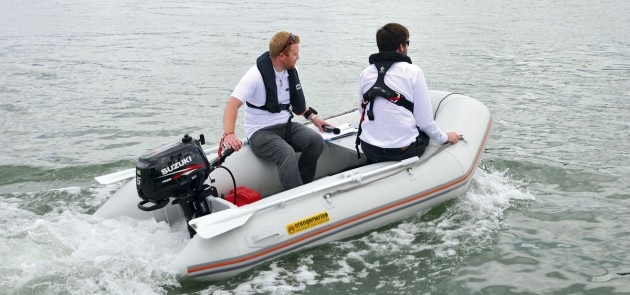
Comfort: 4/5
After Yamaha, the volume of the Suzuki cylinder was the largest, and we expected a bigger screen. However, the decibel measurement showed identical results with Yamaha, which is presented at the same price as our test case. At idle, the noise level was 66dB(A), and when revving up to average, it increases to 77dB(A). However, at full speed the noise level is 88dB(A) - 4 more than Yamaha's. The sound is even pleasant, you don't pay much attention to it, even on a long trip.
Easy to use: 4/5
The engine does not have a climbing stop during reverse and it went up several times when we turned it around, of course, that is a significant disadvantage. The speed switch is on the side and it's well sized and easy to reach. The low weight goes to the advantages of this engine, and then it's compact. Both parameters suggest that it will be quite convenient to store and carry the motor in the case.
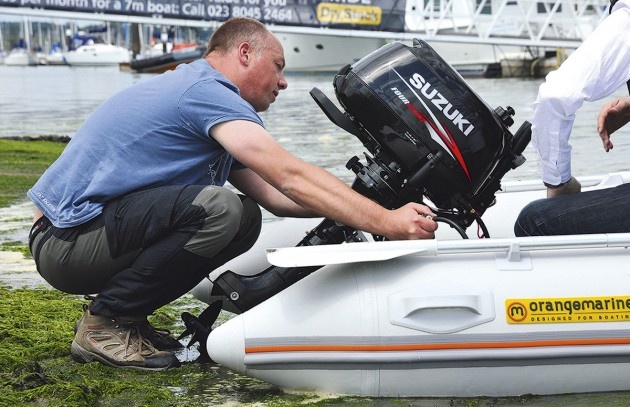
Tank size: 5/5
The 1.5-litre capacity of the built-in tank will ensure the longest service life among gasoline engines without the use of portable tanks. There are also fittings for connecting the external tank in case you need to go even further.
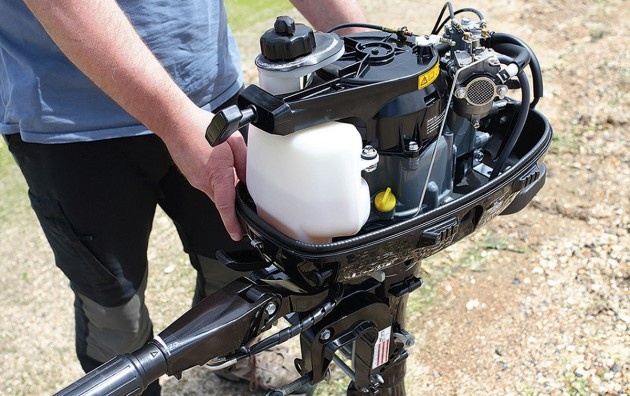
Conclusion: 4/5
If you are looking for a lighter engine, Suzuki is a great option. Its advantages don't end with one weight: it's quiet, compact, and the built-in tank is the biggest among competitors and provides a larger power reserve. Also it is not necessary to forget about a five-year warranty and quite competitive price. But at the same time, it doesn't make you feel as reliable as some of the other proven engines.
Tohatsu MSF5
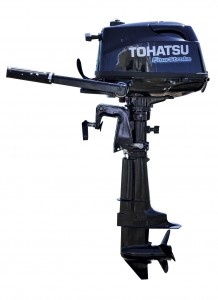
Price: 81 000 r.
Maximum speed: 5.4 knots
acceleration from 0 to the maximum speed: 6.5 s
Noise (idle / medium / full speed): 68/79/89 dB(A)
Weight
:
25 kg
Warranty
:
5 years
manufacturer's website: tohatsu.ru
The largest supplier of outboard engines in the world, Tohatsu sells its low-power engines to competing brands such as Evinrude, Mariner and Mercury. This fact alone can testify to the quality of their development and assembly.
Assembly quality: 4/5
Although it is a budget model, the quality of its assembly is at a high level, but there are some roughness.
Handle for the transfer of the engine is attached conveniently, but the edges are not rounded and drive into your fingers. A five year warranty is not bad, given the low price. It's also possible to install a 5-amp generator.
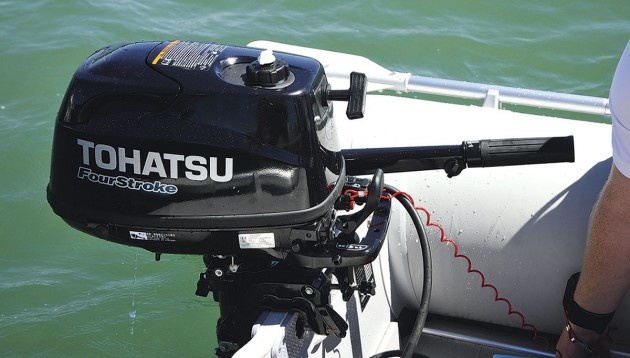
Productivity: 3/5
It took 6.5 seconds to accelerate the boat to its maximum speed. This puts the engine on a par with Mariner/Mercury as the slowest speed. However, it is believed to be easier to drive with heavy boats.
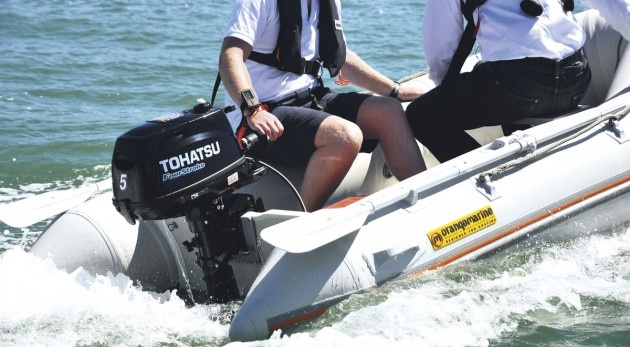
Comfort: 3/5
The motor is quite noisy - at full speed the noise level is 89dB(A), and at neutral speed 68dB(A) fits into the range of competitors. When trying to speed up above the average speed the engine is more and more noisy, not accelerating, and this noise over time tires.
Easy to use: 4/5
After examining the engine, we realized that the climbing fixation system was the most logical one presented here. In most cases, everything had to be sorted out again, but in Tohatsu everything was clear at first sight. The wide shift knob is mounted on the end panel. It's easy to reach, even when the engine is turned around. A version with 5A generator is available, which easily provides power to the running lights and dehumidifying pumps.
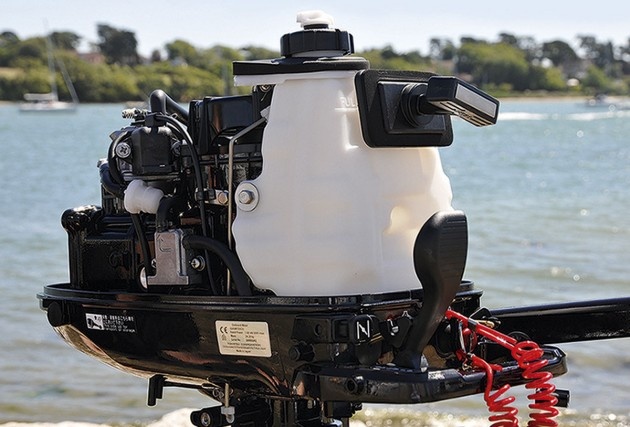
Tank size: 3/5
The built-in tank capacity is 1.15 litres, which is 0.5 litres more than the Yamaha tank. This engine can burn the entire tank in less than an hour, so it's worth thinking about whether you need an extra tank.
Conclusion: 3/5
Tohatsu is the cheapest solution of all presented, but looking at its convenience, thoughtfulness and quality of assembly, you can not say it immediately. The engine here is not the fastest or softest, but for those looking for a budget solution and high quality, you should stop at this offer.
Yamaha F5
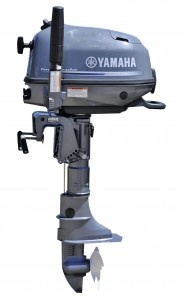
Price: 91 000 r.
Maximum speed: 6.45 knots
acceleration from 0 to the maximum speed: 5.2 s
Noise (idle / medium / full stroke): 66/77/84 dB(A)
Weight
:
27 kg
Warranty
:
3 years
Manufacturer's website
:
https://yamahaoutboards.com/en-us/
.
Yamaha has always tried to achieve the perfect balance between weight, comfort and performance. Usually this aspiration is reflected in the price, but, as you can see, it is not the most expensive engine presented.
Assembly quality: 5/5
Yamaha claims to be the best manufacturer of low-power outboard engines. The design features of some elements are a distinctive feature of Yamaha - for example, the throat of the fuel tank is tilted at an angle of 45° to reduce fuel spillage from the canister.
Productivity : 5/5
In just 5.2 seconds, the engine speeded the boat to 6.4 knots, which makes it a favorite among competitors. The cylinder volume is 139, which is 10% more than all competitors except Suzuki. The larger volume gives more power, which goes into higher speed, resulting in better acceleration.
Comfort: 5/5
This engine easily wins the title of the quietest engine in the group. At neutral speed, it measured 66dB(A), just like Suzuki's, but at full speed it was the lowest noise level, beating 3 dB(A) Honda with its 87dB(A).
Easy to use: 3/5
This is the heaviest engine under consideration, but the handle at the rear of the engine makes carrying and mounting on the transom relatively easy. Finding the tilt adjuster may not be as easy at first as switching between the built-in and outdoor tanks, but once you've seen it, there are no more problems.
The engine is designed to be placed on three sides without any consequences, while most four-stroke engines only need to be placed on a certain side to prevent oil from entering the combustion chamber. Thus, the engine is perfect for storing it even on board a boat.
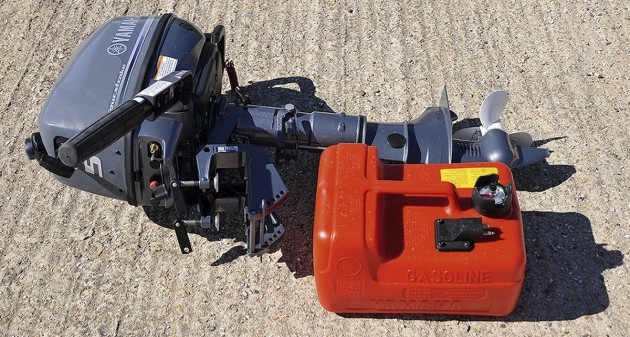
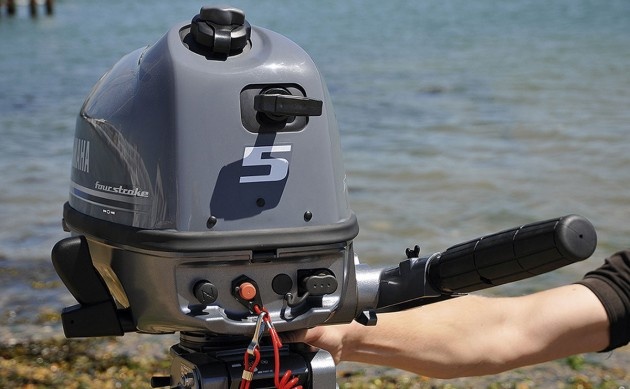
Tank size: 2/5
The built-in tank here is the smallest - only 1.1 liters. This will only last 45 minutes if the engine is not running at full power. If you need to go longer, you will need to connect the remote tank to special connectors.
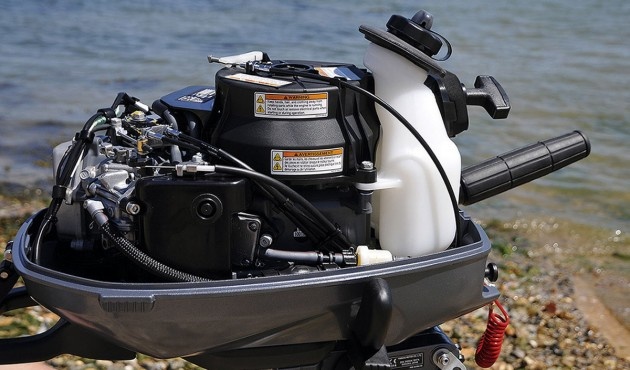
Yamaha proved to be the softest and fastest on the road, far ahead of the competition. Usually a brand needs to gain an advantage in everything, but not in our case. This engine, whose price tag is the second most expensive, more than justifies all the costs of buying.
Engine Overview Summary Table
| The engine: | Price, thousand p..: | Maximum speed, node..: | Acceleration from 0 to maximum speed, s: | Noise (idle / average rpm / maximum rpm), dB(A):s: | Weight, kg: | Warranty, years: | Tank volume, l: | Evaluation: |
|---|---|---|---|---|---|---|---|---|
| Honda BF5 | 150 | 4,9 | 5,3 | 69/82/87 | 27 | 6 | - | 3/5 |
| Lehr 5hp Propane | 102 | 4,5 | 6,3 | 74/85/89 | 22 | 3 | Gas Cylinder Connection | 3/5 |
| Mariner/Mercury F5 | 82 | 5,5 | 6,9 | 68/79/89 | 26 | 5 | 1,15 | 3/5 |
| Suzuki DF5 | 90,5 | 5,2 | 6 | 66/77/88 | 25 | 5 | 1,5 | 4/5 |
| Tohatsu MSF5 | 81 | 5,4 | 6,5 | 68/79/89 | 25 | 5 | 1,15 | 3/5 |
| Yamaha F5 | 91 | 6,45 | 5,2 | 66/77/84 | 27 | 3 | 1,1 | 5/5 |

